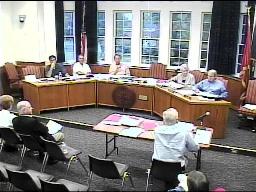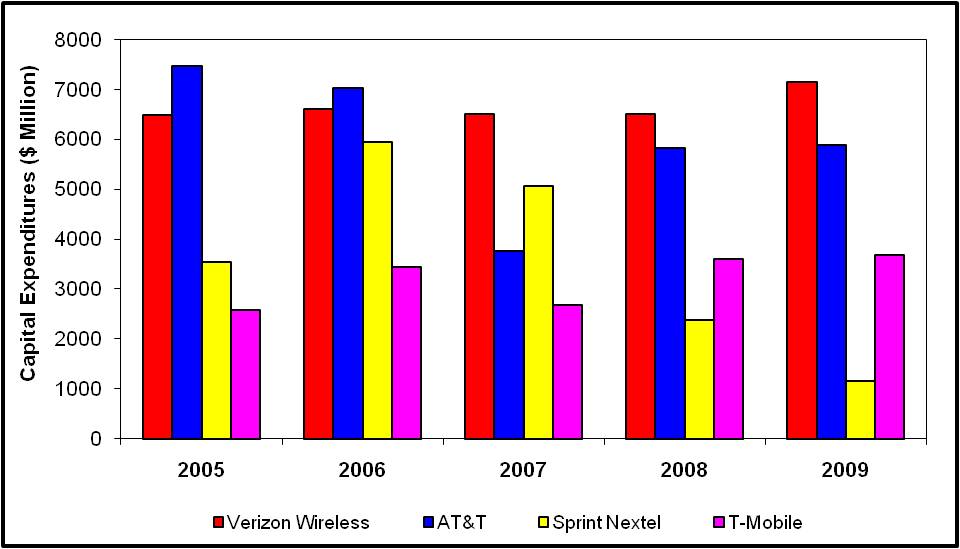BY LARRY DOWNES AND GEOFFREY A. MANNE
The FCC published in June its annual report on the state of competition in the mobile services marketplace. Under ordinary circumstances, this 300-plus page tome would sit quietly on the shelf, since, like last year’s report, it ‘‘makes no formal finding as to whether there is, or is not, effective competition in the industry.’’
But these are not ordinary circumstances. Thanks to innovations including new smartphones and tablet computers, application (app) stores and the mania for games such as ‘‘Angry Birds,’’ the mobile industry is perhaps the only sector of the economy where consumer demand is growing explosively.
Meanwhile, the pending merger between AT&T and T-Mobile USA, valued at more than $39 billion, has the potential to accelerate development of the mobile ecosystem. All eyes, including many in Congress, are on the FCC and the Department of Justice. Their review of the deal could take the rest of the year. So the FCC’s refusal to make a definitive finding on the competitive state of the industry has left analysts poring through the report, reading the tea leaves for clues as to how the FCC will evaluate the proposed merger.
Make no mistake: this is some seriously expensive tea. If the deal is rejected, AT&T is reported to have agreed to pay T-Mobile $3 billion in cash for its troubles. Some competitors, notably Sprint, have declared
full-scale war, marshaling an army of interest groups and friendly journalists.
But the deal makes good economic sense for consumers. Most important, T-Mobile’s spectrum assets will allow AT&T to roll out a second national 4G LTE (longterm evolution) network to compete with Verizon’s, and expand service to rural customers. (Currently, only 38 percent of rural customers have three or more choices for mobile broadband.)
More to the point, the government has no legal basis for turning down the deal based on its antitrust review. Under the law, the FCC must approve AT&T’s bid to buy T-Mobile USA unless the agency can prove the transaction is not ‘‘in the public interest.’’ While the FCC’s public interest standard is famously undefined, the agency typically balances the benefits of the deal against potential harm to consumers. If the benefits outweigh the harms, the Commission must approve.
The benefits are there, and the harms are few. Though the FCC refuses to acknowledge it explicitly, the report’s impressive detail amply supports what everyone already knows: falling prices, improved quality, dynamic competition and unflagging innovation have led to a golden age of mobile services. Indeed, the three main themes of the report all support AT&T’s contention that competition will thrive and the public’s interests will be well served by combining with T-Mobile.
1. Mobile Service: Rare Bright Spot in Recession
Demand for mobile services is soaring. The FCC reports 274 million mobile subscribers in 2009, up almost 5 percent from the previous year. The number of mobile internet subscribers, the fastest-growing category, doubled between 2008 and 2009. By late 2010, 41 percent of new mobile phone purchases were for smartphones. More than 9 billion apps had been downloaded by the end of 2010.
Despite poor economic conditions elsewhere, new infrastructure investment continues at a frenzied clip. Between 1999 and 2009, industrywide investment exceeded $213 billion. In 2009 alone, investments topped $20 billion—almost 15 percent of total industry revenue. Of the leading providers, only Sprint decreased
its investments in recent years.
Yet unlike virtually every other commodity, prices for mobile services continue to decline across the board, hardly a sign of flagging competition. The price of mobile voice services, the FCC reports, has ‘‘declined dramatically over the past 17 years,’’ falling 9 percent from 2008-2009 alone. (The average price for a voice minute is now 4 cents in the U.S., compared with 16 cents in Western Europe.) Text prices fell 25 percent in 2009. The price per megabyte of data traffic fell sevenfold from 2008-2010, from $1.21 to 17 cents.
2. Mobile Competition Is Robust and Dynamic
The FCC, recognizing the dynamism of the mobile services industry, is moving away from simplistic tools the agency once used to evaluate industry competitiveness. The report repeatedly de-emphasizes the Herfindahl-Hirschman Index, or HHI concentration index, which tends to understate competition. The report also downplays the value of ‘‘spectrum screens’’ that once limited a single provider to one-third of the total spectrum in a given market.
Now, the commission says, its evaluation is based on real-world conditions, and looks at competition mostly at the local level. That makes sense. ‘‘Consumers generally search for service providers in the local areas where they live, work, and travel,’’ according to the report, ‘‘and are unlikely to search for providers that do not serve their local areas.’’
Looking at all 172 local markets individually, the FCC found ample evidence of vibrant competition. For mobile voice services, for example, nearly 90 percent of consumers have a choice of five or more providers. In 2010, almost 68 percent of U.S. consumers had four or more mobile broadband providers to choose from, a significant increase over 2009.
Competition between different kinds of wireless service (cellular, PCS, WiFi, and WiMax) is also increasing, and a wider range of the radio spectrum is now being included in the FCC’s analysis. Competition between mobile and traditional wireline service is growing in significance. More and more consumers are even ‘‘cutting the cord:’’ By the beginning of 2010, 25 percent of all households had no wireline service, up from 2 percent in 2003.
And competition within the mobile services marketplace, the Commission recognizes, is increasingly being driven not by the carriers but by new devices, applications and services. From 2008-2009, the FCC found that 38 percent of those who had switched carriers did so because it was the only way to obtain the particular handset that they wanted.
There are dozens of handsets to choose from, and no dominant provider among smartphone operating systems or device manufacturers. New entrants can and do thrive: handsets running Google’s Android operating system rose from 5 percent of the total market at the end of 2009 to almost 20 percent by mid-2010.
3. If There Is a Problem, It Is Government
As consumers continue to embrace new mobile technologies and services, pressure is building on existing networks and the limited radio spectrum available to them. The risk of future network overload is serious—the one dark cloud hanging over the mobile industry’s abundant sunshine. According to the report, ‘‘mobile broadband growth is likely to outpace the ability of technology and network improvements to keep up by an estimated factor of three.’’
The FCC sees a ‘‘spectrum deficit’’ of 300 megahertz within five years. But the FCC and Congress have made little progress over the last two years to free up underutilized spectrum in both public and private hands. Auctions for available spectrum in the valuable 700 Mhz. band are tied up in political fights over a public safety network. Spectrum held by over-the-air television broadcasters is idling as Congress debates ‘‘incentive’’ auctions that would share proceeds between the broadcasters and the government.
Improving coverage by modifying or adding cell towers, the commission finds, is subject to considerable delay at the local level. Of 3,300 zoning applications for wireless facilities pending in 2009, nearly 25 percent had been idling for more than a year. Some had been languishing for more than three years, despite an FCC requirement that applications be decided within 150 days at the most.
Combining the spectrum assets of AT&T and T-Mobile would go a long way toward limiting the potentially catastrophic effect of ‘‘spectrum deficit.’’ AT&T plans to move T-Mobile 3G customers to its existing network and integrate T-Mobile’s existing physical infrastructure, improving 3G service and freeing up valuable spectrum to launch a new nationwide 4G LTE network. As the report notes, T-Mobile had no plans to ever launch true 4G service and, given its limited spectrum
holdings, probably never could.
As part of its public interest analysis, the FCC will have to take these and other regulatory constraints to heart.
To Reality . . . and Beyond!
Reading the entire report, it’s clear that the FCC recognizes, as it must, that, even with the exit of T-Mobile from the U.S. market, mobile services would be anything but a ‘‘duopoly’’—either at the national level or at the local level, which is where it counts.
Competition is being driven by multiple local competitors, competing technologies, and handset and software providers. Federal, state and local governments all play an active role in overseeing the industry, which even the FCC now sees as the only serious constraint on future growth.
In Silicon Valley, if not inside the Beltway, consumers are understood to be the real drivers of the mobile services ecosystem—the true market-makers. Maybe that’s why the report found that the vast majority of U.S. consumers report being ‘‘very satisfied’’ with their mobile service.
It is a relief to see the FCC looking carefully at real data and coming to realistic conclusions, as it does throughout the report. Let’s hope reality continues its reign during the long AT&T/T-Mobile review and beyond, as this dynamic industry continues to evolve.
Reproduced with permission from Daily Report for Executives, July 11, 2011. Copyright 2011 The Bureau of National Affairs, Inc. (800-372-1033) www.bna.com.
 During the 1970’s, I remember a bumper sticker that summed up the prevailing anti-colonial attitude that had developed during the late 1960’s: “U.S. Out of North America.”
During the 1970’s, I remember a bumper sticker that summed up the prevailing anti-colonial attitude that had developed during the late 1960’s: “U.S. Out of North America.” Here they are:
Here they are:



